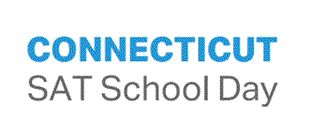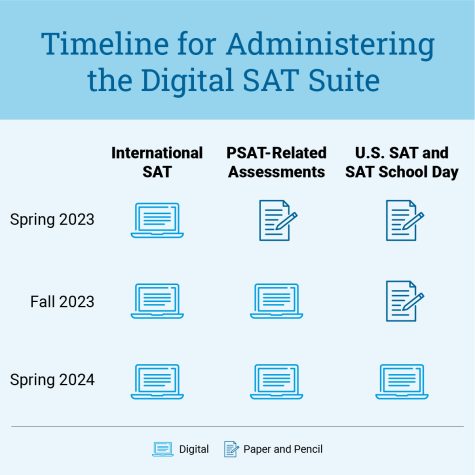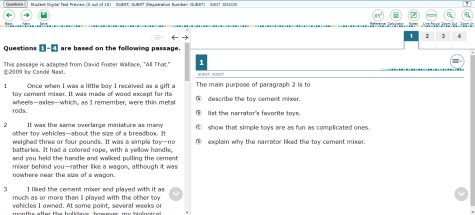Connecticut goes digital for SAT School Day Testing

May 23, 2022
Every year, thousands of high school students around the country sit down at the same time with a #2 pencil in hand to complete the SAT. This annual process is overseen by CollegeBoard and is a common experience for most American high school students. However, the SAT School Day looked very different for Connecticut students this year, with the introduction of a digitally-based format taking place statewide.
The digitally-based model featured testing dates spread across a week, stretching from Mar. 23 to Mar. 30, 2022. Students each took a different test dependent on the date that they had taken the exam, and Danbury juniors were categorized by alphabetical order.
The test came after an announcement by CollegeBoard of upcoming revisions to the SAT for American students taking the test beginning in the Spring of 2024. The new exams, beginning with the Class of 2025 will be taken on a device and come with a host of changes. The new shortened test will have shorter reading passages per question, and the entire math section will be completely calculator-active. The scores will also be reported faster.

The CSDE (Connecticut State Department of Education) began the transition to the digital system beginning in 2020, while CollegeBoard also offered the current iteration of the test since 2016.
However, given that this year was the state pilot for the program, reviews of the experience were mixed.
Junior Georen Chirayil criticized the inefficiency of taking the test, as he said “it is really difficult to switch through the questions and it takes time to do so”, especially due to the lag caused by the strain on the wifi powering the system. Meanwhile, another student, Yennifer Barajas, said the online version saved her “a lot of time and stress”, since she didn’t have to flip between pages to answer questions that required the use of a text.
The CSDE made a variety of claims justifying the switch, including that students were used to the testing environment because of other tests such as the SBAC (Smarter Balanced Assessment Consortium) and NGSS (Next Gen Science Standards). Meanwhile, the testing environment looked unpolished and dated, and the student body held a very divided stance on the UI of the software.

https://portal.ct.gov/-/media/SDE/Student-Assessment/SAT/digital-transition-2022.pdf
Another major shift touted by the CSDE was that schools would be able to test over a longer period of time, as opposed to the standard adopted in previous years in which all juniors tested at the same time. Instead, many teachers and students alike criticized DHS’s approach. Teachers complained of being unable to follow lesson plans with different students being absent at different times, and students having to make up work missed during the test.
Out of 40 Danbury High School Juniors surveyed, 25% said that they would be very likely to support a digital test in the future, although the majority of students indicated that they were indifferent to either platform. However, compared to those that disliked it, more students supported the digital platform, even with a few minor inconveniences.
Instead, if measures were to be taken to provide prior notice, or if more explanation was provided to the students before the exam, there would have likely been a much more positive reaction; even with the obvious platform-transcending distaste for standardized tests all too familiar to 16-17-year-olds.


































